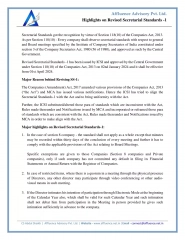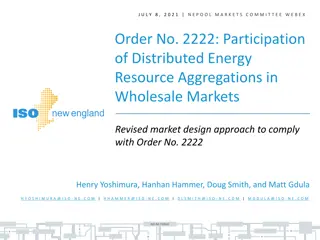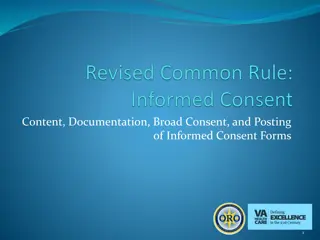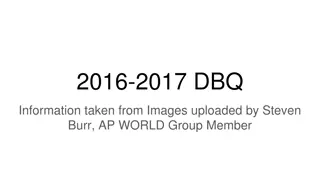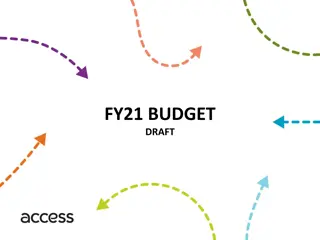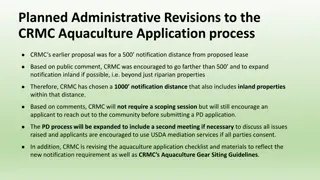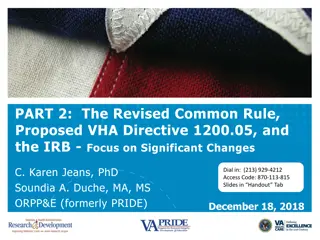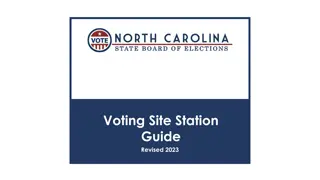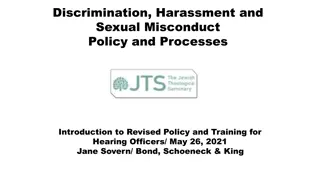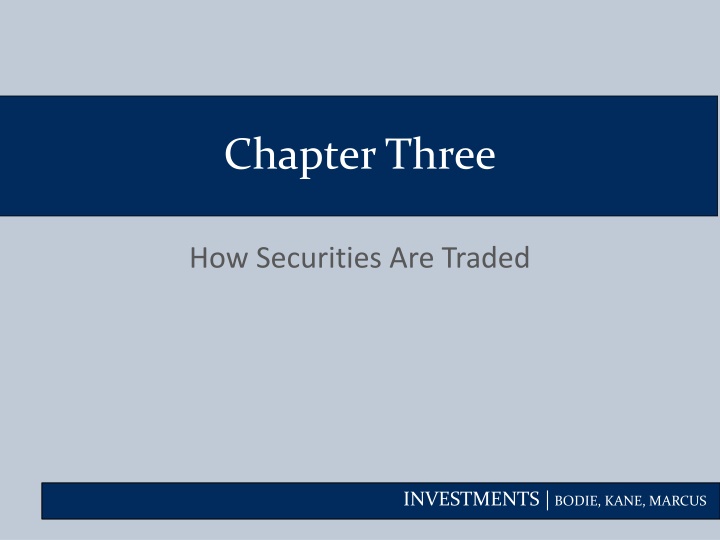
How Securities Are Traded in the Investments Market
Explore the process of how securities are traded in the investments market, covering topics such as IPOs, underpricing, trading mechanics, costs, margin trading, and more. Learn about primary and secondary markets, securities issuance by firms, publicly traded vs. privately held firms, and the role of underwriters.
Download Presentation

Please find below an Image/Link to download the presentation.
The content on the website is provided AS IS for your information and personal use only. It may not be sold, licensed, or shared on other websites without obtaining consent from the author. If you encounter any issues during the download, it is possible that the publisher has removed the file from their server.
You are allowed to download the files provided on this website for personal or commercial use, subject to the condition that they are used lawfully. All files are the property of their respective owners.
The content on the website is provided AS IS for your information and personal use only. It may not be sold, licensed, or shared on other websites without obtaining consent from the author.
E N D
Presentation Transcript
Chapter Three How Securities Are Traded INVESTMENTS | BODIE, KANE, MARCUS INVESTMENTS | BODIE, KANE, MARCUS
Topics Covered How securities are first marketed to the public by investment bankers Underwriters, IPOs Underpricing, SEOs How and where already-issued securities are traded among investors. Mechanics of trading ECNs, specialist markets, dealer markets Costs of trading spreads, commissions Buying on margin and short selling INVESTMENTS | BODIE, KANE, MARCUS INVESTMENTS | BODIE, KANE, MARCUS 3-2
How Firms Issue Securities Primary Market Market for newly-issued securities Firms issue new securities through underwriter (investment banker) to public Secondary Market Investors trade previously issued securities among themselves INVESTMENTS | BODIE, KANE, MARCUS INVESTMENTS | BODIE, KANE, MARCUS 3-3
INVESTMENTS | BODIE, KANE, MARCUS INVESTMENTS | BODIE, KANE, MARCUS 3-4
How Firms Issue Securities Privately Held Firms Up to 1,999 shareholders (from 2012) Raise funds through private placement Lower liquidity of shares Have fewer obligations to release financial statements and other information INVESTMENTS | BODIE, KANE, MARCUS INVESTMENTS | BODIE, KANE, MARCUS 3-5
How Firms Issue Securities Publicly Traded Companies Raise capital from a wider range of investors through initial public offering (IPO) Public offerings are marketed by investment bankers or underwriters Registration must be filed with the SEC INVESTMENTS | BODIE, KANE, MARCUS INVESTMENTS | BODIE, KANE, MARCUS 3-6
Figure 3.1 Relationship Among a Firm Issuing Securities, the Underwriters, and the Public INVESTMENTS | BODIE, KANE, MARCUS INVESTMENTS | BODIE, KANE, MARCUS 3-7
How Firms Issue Securities Shelf Registration SEC Rule 415: Allows firms to register securities and gradually sell them to the public for two years Shares can be sold on short notice and in small amounts without incurring high floatation costs INVESTMENTS | BODIE, KANE, MARCUS INVESTMENTS | BODIE, KANE, MARCUS 3-8
How Firms Issue Securities Initial Public Offerings Road shows to publicize new offering Bookbuilding to determine demand for the new issue Degree of investor interest in the new offering provides valuable pricing information INVESTMENTS | BODIE, KANE, MARCUS INVESTMENTS | BODIE, KANE, MARCUS 3-9
How Firms Issue Securities Initial Public Offerings Underwriter bears price risk associated with placement of securities: IPOs are commonly underpriced compared to the price they could be marketed (ex.: Groupon) Some IPOs, however, are well overpriced (ex.: Facebook); others cannot even fully be sold INVESTMENTS | BODIE, KANE, MARCUS INVESTMENTS | BODIE, KANE, MARCUS 3-10
Average Initial Returns for IPOs in Various Countries INVESTMENTS | BODIE, KANE, MARCUS INVESTMENTS | BODIE, KANE, MARCUS 3-11
Average first-day returns on non-European IPOs 150% 140% 130% 120% 110% Average first-day returns 100% 90% 80% 70% 60% 50% 40% 30% 20% 10% 0%
Average first-day returns on (mostly) European IPOs 60% 50% Average first-day returns 40% 30% 20% 10% 0% -10% Source: Prof. Jay Ritter, University of Florida
Long-term Relative Performance of Initial Public Offerings INVESTMENTS| BODIE, KANE, MARCUS INVESTMENTS| BODIE, KANE, MARCUS 3-14
Further evidence on IPO http://www.acsu.buffalo.edu/~keechung/Lect ure%20Notes%20and%20Syllabus%20(MGF63 3)/IPOs2016Statistics%20Jay%20Ritter.pdf INVESTMENTS| BODIE, KANE, MARCUS INVESTMENTS| BODIE, KANE, MARCUS 3-15
How Securities are Traded Types of Markets: Direct search Buyers and sellers seek each other Brokered markets Brokers search out buyers and sellers Dealer markets Dealers have inventories of assets from which they buy and sell Auction markets Traders converge at one place to trade INVESTMENTS| BODIE, KANE, MARCUS INVESTMENTS| BODIE, KANE, MARCUS 3-16
INVESTMENTS| BODIE, KANE, MARCUS INVESTMENTS| BODIE, KANE, MARCUS
Costs of Trading Commission: fee paid to broker for making the transaction Spread: cost of trading with dealer Bid: price dealer will buy from you Ask: price dealer will sell to you Spread: ask - bid Combination: on some trades both are paid INVESTMENTS| BODIE, KANE, MARCUS INVESTMENTS| BODIE, KANE, MARCUS 3-18
Orders and Order Properties INVESTMENTS| BODIE, KANE, MARCUS INVESTMENTS| BODIE, KANE, MARCUS 3-19
Orders Orders are instructions to trade that traders give to brokers and exchanges that arrange their trades. Orders always specify The security to be traded The quantity to be traded The side of the order (buy or sell) INVESTMENTS| BODIE, KANE, MARCUS INVESTMENTS| BODIE, KANE, MARCUS 3-20
Orders may specify Price specifications How long the order is valid When the order can be executed Whether they can be partially filled or not INVESTMENTS| BODIE, KANE, MARCUS INVESTMENTS| BODIE, KANE, MARCUS 3-21
Some important terms 1 Bid: buy order specifying a price (price is called the bid). Offer: sell order specifying a price (price is called offer or ask). Best Bid: standing buy order that bids the highest price bid. Best offer: standing sell order that has the lowest price offer. INVESTMENTS| BODIE, KANE, MARCUS INVESTMENTS| BODIE, KANE, MARCUS 3-22
Some important terms 2 Dealers have an obligation to continuously quote bids and offers, and the associated sizes (number of shares), when they are registered market markers for the stock. Their quotes also have to be firm during regular market hours. INVESTMENTS| BODIE, KANE, MARCUS INVESTMENTS| BODIE, KANE, MARCUS 3-23
Some important terms 3 Public orders with a price limit can also become the market bid or offer if they are at a better price than those currently quoted by a registered market maker. The market s best bid and offer constitute the inside market, the best bid/ask, or the BBO. The best bid and offer across all markets trading an instrument is called the NBBO. INVESTMENTS| BODIE, KANE, MARCUS INVESTMENTS| BODIE, KANE, MARCUS 3-24
Some important terms 4 The difference between the best offer and the best bid is the bid/ask spread, or the inside spread (touch). Orders supply liquidity if they give other traders the opportunity to trade. Orders demand liquidity (immediacy) if they take advantage of the liquidity supplied by other traders orders. INVESTMENTS| BODIE, KANE, MARCUS INVESTMENTS| BODIE, KANE, MARCUS 3-25
What are agency/proprietary orders? Orders submitted by traders for their own account are proprietary orders. Broker-dealers and dealers. Since most traders are unable to directly access the markets, most order are instead agency orders. Presented by a broker to the market. INVESTMENTS| BODIE, KANE, MARCUS INVESTMENTS| BODIE, KANE, MARCUS 3-26
Market orders Instruction to trade at the best price currently available in the market. Immediacy Buy at ask/sell at bid => pay the bid/ask spread Price uncertainty Fills quickly but sometimes at inferior prices. INVESTMENTS| BODIE, KANE, MARCUS INVESTMENTS| BODIE, KANE, MARCUS 3-27
Used by impatient traders and traders who want to be sure that they will trade. It is usually thought that insiders use that type of order. When submitting a market order execution is nearly certain but the execution price is uncertain. Takes liquidity from the market in terms of immediacy. They then pay a price for immediacy which is the bid-ask spread. INVESTMENTS| BODIE, KANE, MARCUS INVESTMENTS| BODIE, KANE, MARCUS 3-28
Market order: Example 1 Suppose that the quote is 20 bid, 24 offered. Suppose that the best estimate of the true value of the security is 22. A market buy order would be executed at 24 for a security worth 22. The price paid would be 24 and therefore the price of immediacy would then be 2. INVESTMENTS| BODIE, KANE, MARCUS INVESTMENTS| BODIE, KANE, MARCUS 3-29
Market order: Example 2 A market sell order would be executed at 20 for a security worth 22. The price received would be 20 and therefore the price of immediacy would then be 2. The price of immediacy is the bid-ask spread. INVESTMENTS| BODIE, KANE, MARCUS INVESTMENTS| BODIE, KANE, MARCUS 3-30
Market impact Large market orders tend to move prices. Liquidity might not be sufficient at the inside quotes for large orders to fill at the best price. Prices might move further following the trade. Information and liquidity reasons. INVESTMENTS| BODIE, KANE, MARCUS INVESTMENTS| BODIE, KANE, MARCUS 3-31
Market impact: Example For example, suppose that a 2,000 share market buy order arrives and the best offer (ask) is $10 for 1,000 shares. Half the order will fill at $10, but the next 1,000 will have to fill at the next price in the book, say at $11 (where we assume that there is also 1,000 offered). The volume-weighted average price for the order will be $10.5, which is larger than $10. INVESTMENTS| BODIE, KANE, MARCUS INVESTMENTS| BODIE, KANE, MARCUS 3-32
Limit orders A limit order is an instruction to trade at the best price available, but only if it is no worse than the limit price specified by the trader. For a limit buy order, the limit price specifies a maximum price. For a limit sell order, the limit price specifies a minimum price. INVESTMENTS| BODIE, KANE, MARCUS INVESTMENTS| BODIE, KANE, MARCUS 3-33
Limit orders: Examples If you submit a limit buy order for 100 shares (round lot) of Dell with limit price of $20. This means that you do not want to buy those 100 shares of Dell at a price above $20. If you submit a limit sell order for 100 shares (round lot) of Dell with limit price of $24. This means that you do not want to sell those 100 shares of Dell at a price below $24. INVESTMENTS| BODIE, KANE, MARCUS INVESTMENTS| BODIE, KANE, MARCUS 3-34
If the limit order is executable (marketable), than the broker (or an exchange) will fill the order right away. If the order is not executable, the order will be a standing offer to trade. Waiting for incoming order to obtain a fill. Cancel the order. Standing orders are placed in a file called a limit order book. INVESTMENTS| BODIE, KANE, MARCUS INVESTMENTS| BODIE, KANE, MARCUS 3-35
Limit price placement: (from very aggressive to least aggressive) Marketable limit order: order that can immediately execute upon submission (limit price of a buy order is at or above the best offer), At the market limit order: limit buy order with limit price equal to the best bid and limit sell order with limit price equal to the best offer, Behind the market limit order: limit buy order with limit price below the best bid and limit sell order with limit price above the best offer. INVESTMENTS| BODIE, KANE, MARCUS INVESTMENTS| BODIE, KANE, MARCUS 3-36
INVESTMENTS| BODIE, KANE, MARCUS INVESTMENTS| BODIE, KANE, MARCUS 3-37
A standing limit order is a trading option that offers liquidity A limit sell order is a call option and a limit buy order is a put option. Their strike prices are the limit prices. A limit order is not an option contract (not sold). The option is good until cancelled or until the order expires. The value of the implicit limit order option increases with maturity. INVESTMENTS| BODIE, KANE, MARCUS INVESTMENTS| BODIE, KANE, MARCUS 3-38
Why would anyone use limit orders? The compensation that limit order traders hope to receive for giving away free trading options is to trade at a better price. However, options might not fill (execution uncertainty). Chasing the price. INVESTMENTS| BODIE, KANE, MARCUS INVESTMENTS| BODIE, KANE, MARCUS 3-39
Limit order traders might also regret having had their order filled (adverse selection) What could cause a limit order to regret obtaining a fill? How would this fact affect strategies involving limit orders? INVESTMENTS| BODIE, KANE, MARCUS INVESTMENTS| BODIE, KANE, MARCUS 3-40
Stop orders Activates when the price of the stock reaches or passes through a predetermined limit (stop price). When the trade takes place the order becomes a market order (conditional market order). Buy only after price rises to the stop price. Sell only after price falls to the stop price. INVESTMENTS| BODIE, KANE, MARCUS INVESTMENTS| BODIE, KANE, MARCUS 3-41
Stop orders are typically used to close down losing positions (stop loss orders). Mainly used on market orders and few on limit orders. INVESTMENTS| BODIE, KANE, MARCUS INVESTMENTS| BODIE, KANE, MARCUS 3-42
Example: Suppose that the market for Dell is currently 20 bid, 24 offered. Suppose that you place a stop loss order for 1,000 shares of Dell at a stop price of 15. Suppose that after having placed that order, the market falls to: 13 bid, 15 offered. The bid price passed your stop price. Your order is then executed at 13 provided there is enough quantity at that price. The stop price may not be the price at which you are executed, as above. INVESTMENTS| BODIE, KANE, MARCUS INVESTMENTS| BODIE, KANE, MARCUS 3-43
Difference between stop orders and limit orders The difference lies in their relation with respect to the order flow. A stop loss order transacts when the market is falling and it is a sell order. Therefore such an order takes liquidity away from the market (it must be accommodated so it provides impetus to any downward movement). INVESTMENTS| BODIE, KANE, MARCUS INVESTMENTS| BODIE, KANE, MARCUS 3-44
A limit order trades on the opposite side of the market movement. If the market is rising, the upward movement triggers limit sell orders. Outstanding limit orders provide liquidity to the market. INVESTMENTS| BODIE, KANE, MARCUS INVESTMENTS| BODIE, KANE, MARCUS 3-45
Trading Mechanisms Dealer markets Electronic communication networks (ECNs) Trading systems that automatically execute orders Specialists markets Maintain a fair and orderly market Have been largely replaced by ECNs INVESTMENTS| BODIE, KANE, MARCUS INVESTMENTS| BODIE, KANE, MARCUS 3-46
The Rise of Electronic Trading In the US, the share of electronic trading rose from 16% to 80% in 2000s and was triggered by an interaction of new technologies and new regulations 1975: Elimination of fixed commissions on the NYSE https://www.businessinsider.com/historical-trading- commissions-2014-3 1997: Limit order display rule on NASDAQ, leading to narrower bid-ask spreads INVESTMENTS| BODIE, KANE, MARCUS INVESTMENTS| BODIE, KANE, MARCUS 3-47
The Rise of Electronic Trading 1997 and 2001: Reduction of minimum tick size from one-eighth to one-sixteenth, and 1 cent, respectively 2000: Emergence of NASDAQ Stock Market 2006: NYSE is renamed to NYSE Arca after acquiring the electronic Archipelago Exchange 2007: Creation of National Market System (NMS) to link exchanges electronically INVESTMENTS| BODIE, KANE, MARCUS INVESTMENTS| BODIE, KANE, MARCUS 3-48
Figure 3.5 The Effective Spread Fell Dramatically as the Minimum Tick Size Fell (Value-weighted average of NYSE-listed shares) INVESTMENTS| BODIE, KANE, MARCUS INVESTMENTS| BODIE, KANE, MARCUS 3-49
U.S. Markets NASDAQ Lists about 3,000 firms Originally, NASDAQ was primarily a dealer market with a price quotation system Dealer collusion Today, NASDAQ s Market Center offers a sophisticated electronic trading platform with automatic trade execution Large orders may still be negotiated through brokers and dealers INVESTMENTS| BODIE, KANE, MARCUS INVESTMENTS| BODIE, KANE, MARCUS 3-50


